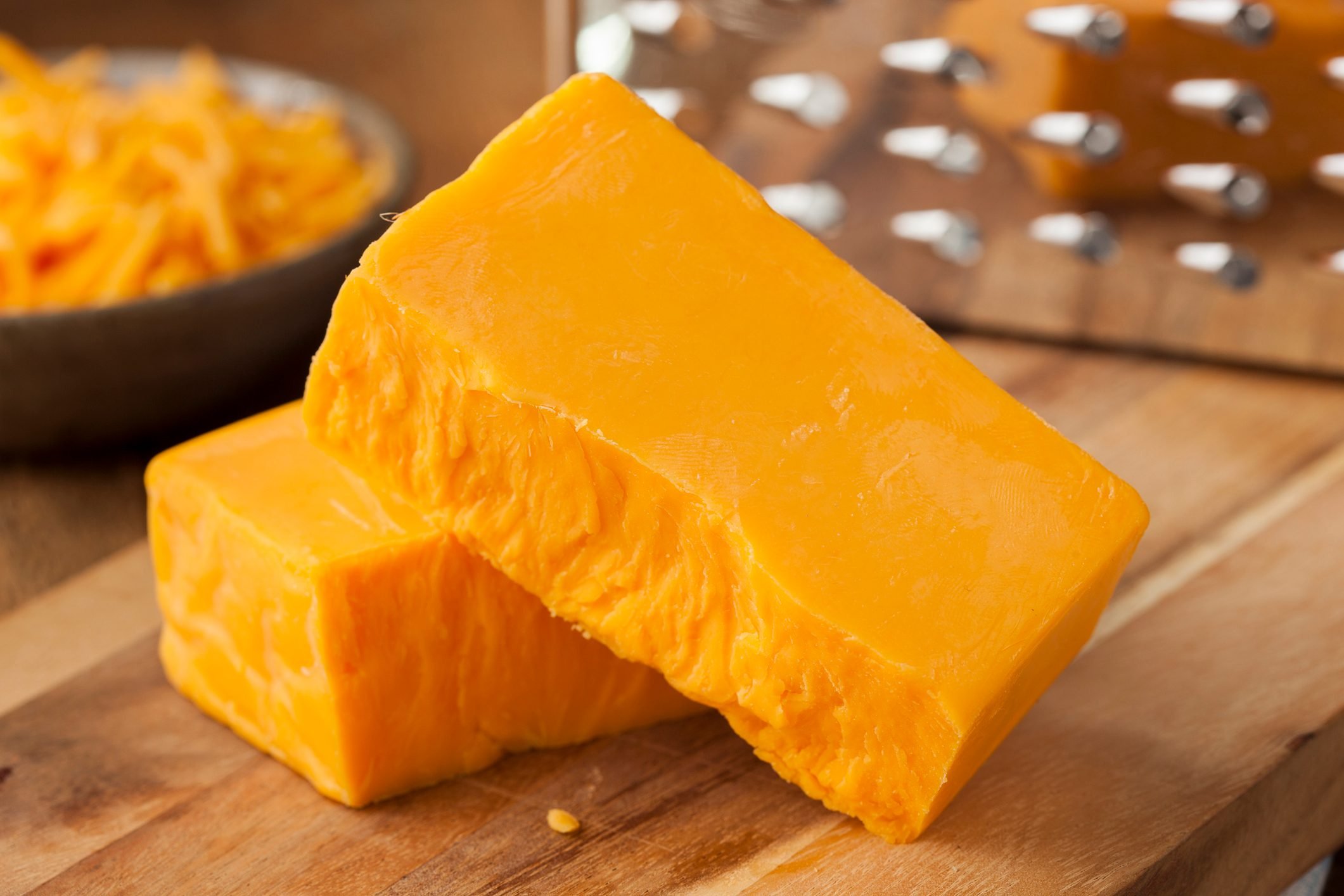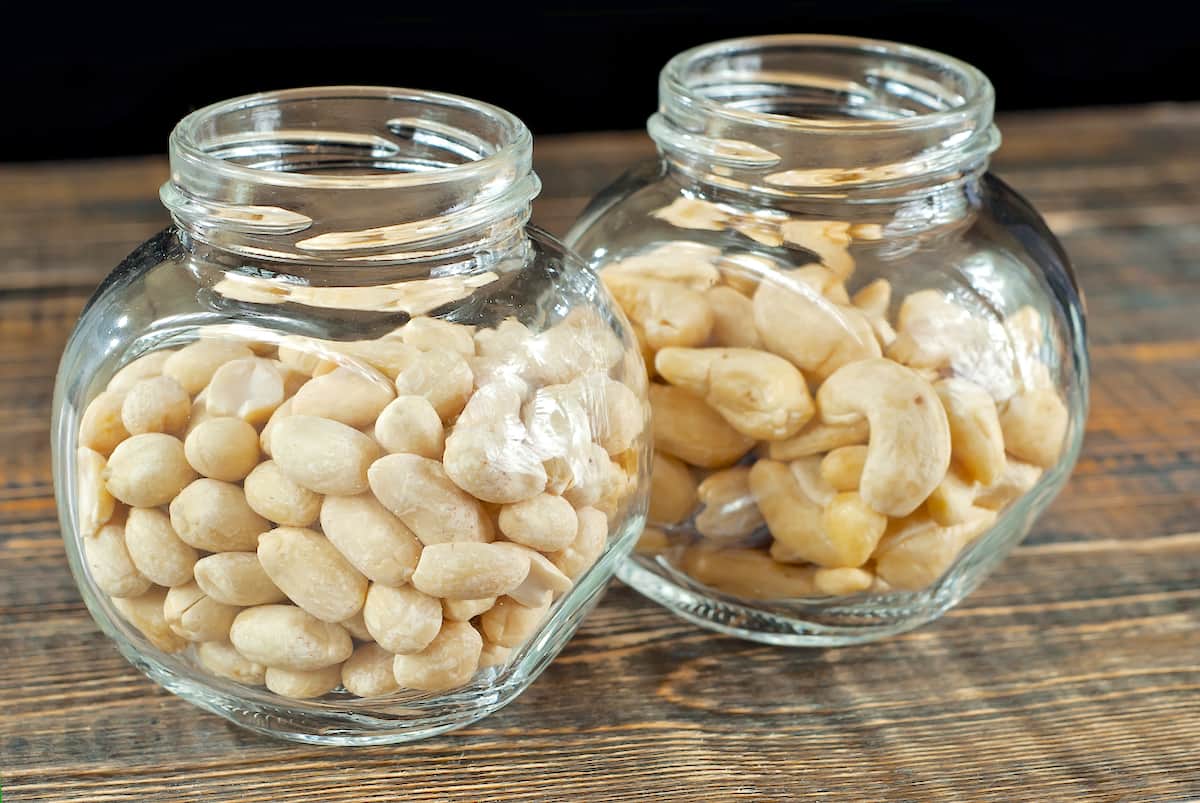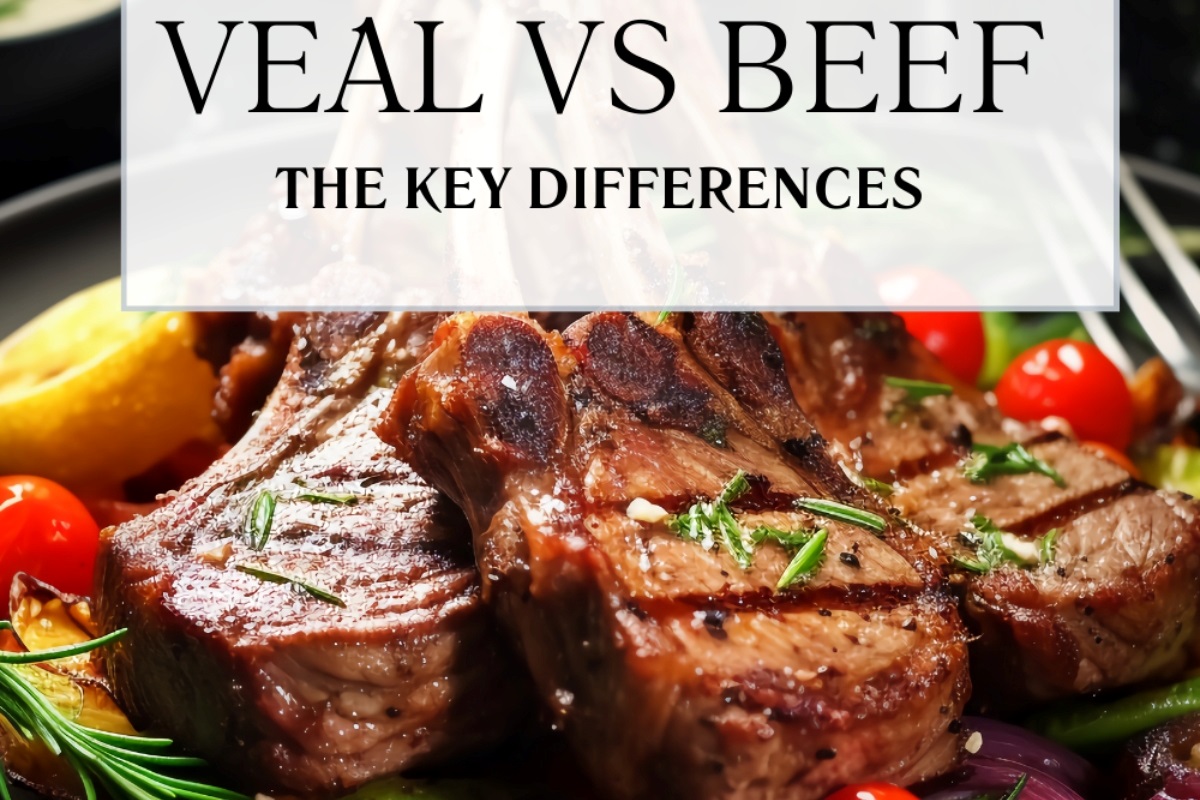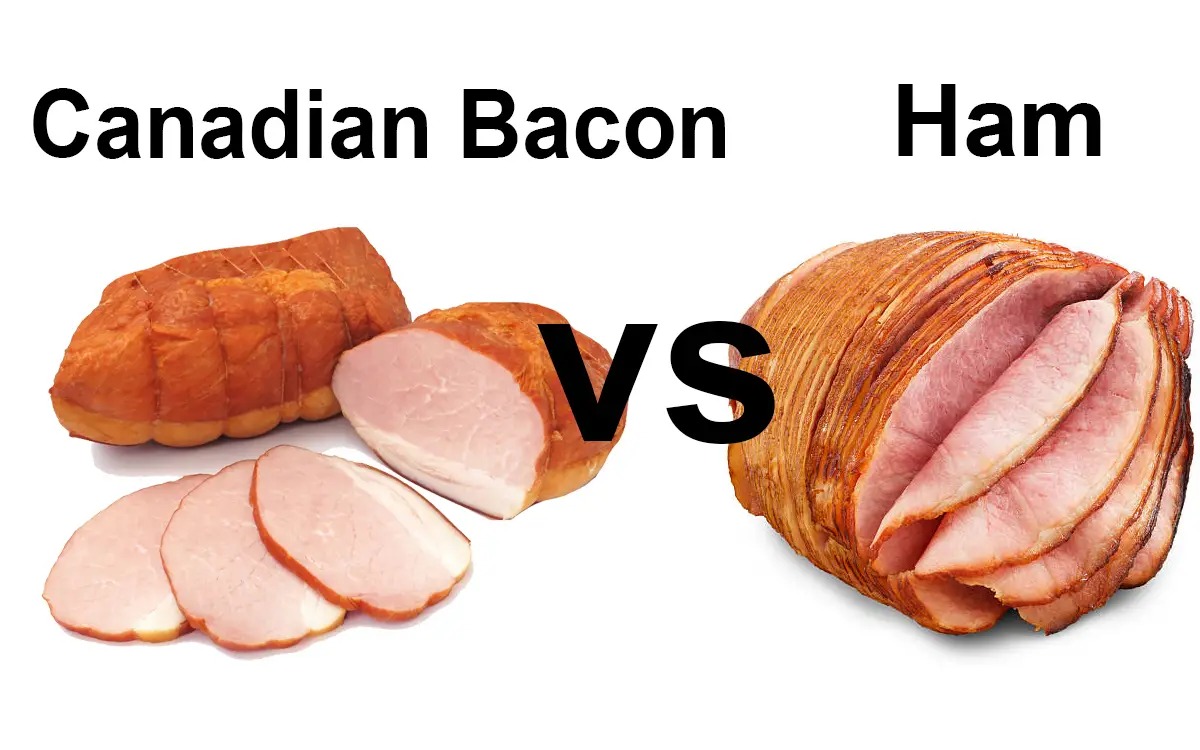Home>Food and Cooking>The Surprising Truth: Ricotta Cheese Vs Cottage Cheese


Food and Cooking
The Surprising Truth: Ricotta Cheese Vs Cottage Cheese
Published: January 25, 2024
Discover the key differences between ricotta cheese and cottage cheese. Find out which one is better for your cooking needs. Explore more food and cooking insights.
(Many of the links in this article redirect to a specific reviewed product. Your purchase of these products through affiliate links helps to generate commission for Noodls.com, at no extra cost. Learn more)
Table of Contents
Introduction
When it comes to versatile and creamy dairy products, ricotta cheese and cottage cheese often find themselves in the spotlight. These two popular cheeses share similar appearances, leading to frequent confusion among consumers. However, they possess unique characteristics that set them apart in terms of taste, texture, and culinary applications. Understanding the differences between ricotta cheese and cottage cheese is essential for making informed choices in the kitchen and at the grocery store.
Ricotta cheese, originating from Italy, boasts a rich history dating back to ancient times. Its name, which translates to "recooked" in Italian, reflects the traditional method of crafting this cheese by using the whey left over from other cheese production. On the other hand, cottage cheese has its roots in Eastern Europe and is renowned for its fresh and lumpy texture.
Despite their similar appearances, ricotta cheese and cottage cheese differ significantly in terms of nutritional content, health benefits, and culinary uses. Exploring these distinctions can empower individuals to make informed decisions based on their dietary preferences, culinary needs, and health goals. Let's delve deeper into the surprising truth behind ricotta cheese and cottage cheese, unraveling the unique characteristics and benefits that each brings to the table.
Nutritional Comparison
When it comes to nutritional content, ricotta cheese and cottage cheese each offer distinct profiles that cater to various dietary needs. Understanding these differences is essential for individuals seeking to make informed choices based on their health and nutritional goals.
Ricotta cheese is renowned for its rich and creamy texture, which is achieved through the use of whole milk. This results in a higher fat content compared to cottage cheese. A 100-gram serving of ricotta cheese typically contains around 174 calories, 13 grams of fat, and 11 grams of protein. Additionally, it offers essential nutrients such as calcium, phosphorus, and selenium, contributing to bone health and overall well-being.
On the other hand, cottage cheese is celebrated for its high protein content, making it a popular choice among fitness enthusiasts and individuals seeking to boost their protein intake. A 100-gram serving of cottage cheese provides approximately 98 calories, 4 grams of fat, and an impressive 11 grams of protein. Furthermore, cottage cheese is a rich source of B vitamins, particularly riboflavin (vitamin B2), which plays a crucial role in energy production and metabolism.
In terms of carbohydrate content, ricotta cheese contains minimal carbs, making it a suitable option for individuals following low-carb or ketogenic diets. Conversely, cottage cheese contains slightly more carbohydrates, making it a versatile choice for those seeking a balance of macronutrients in their meals.
When considering sodium content, it's important to note that cottage cheese tends to have a higher sodium content compared to ricotta cheese. This distinction is significant for individuals monitoring their sodium intake, such as those with certain medical conditions or those striving to maintain a heart-healthy diet.
In summary, while both ricotta cheese and cottage cheese offer valuable nutrients, their nutritional compositions vary, allowing individuals to select the option that best aligns with their dietary preferences and health objectives. Whether prioritizing protein intake, managing fat consumption, or focusing on specific micronutrients, the nutritional comparison between ricotta cheese and cottage cheese provides valuable insights for making informed dietary choices.
Health Benefits
Ricotta cheese and cottage cheese offer a range of health benefits, making them valuable additions to a well-rounded diet. Understanding these benefits can empower individuals to make informed choices that align with their health and wellness goals.
Ricotta cheese, with its creamy texture and rich flavor, provides essential nutrients that contribute to overall well-being. It is a notable source of calcium, a mineral crucial for bone health, muscle function, and nerve transmission. Additionally, ricotta cheese contains phosphorus, which plays a vital role in bone mineralization and the maintenance of healthy teeth. Furthermore, the selenium content in ricotta cheese offers antioxidant properties, protecting cells from damage and supporting immune function.
On the other hand, cottage cheese stands out for its high protein content, making it an excellent choice for individuals aiming to increase their protein intake. Protein is essential for muscle repair and growth, satiety, and the maintenance of healthy skin, hair, and nails. Additionally, cottage cheese is a rich source of B vitamins, including riboflavin (vitamin B2), which supports energy production, red blood cell formation, and the maintenance of healthy skin.
Both ricotta cheese and cottage cheese provide valuable nutrients while offering versatility in culinary applications. Individuals seeking to support their bone health, muscle function, and overall well-being can benefit from incorporating these cheeses into their meals and snacks. By leveraging the unique health benefits of ricotta cheese and cottage cheese, individuals can enhance the nutritional quality of their diets while savoring the distinct flavors and textures that these cheeses bring to the table.
Incorporating these cheeses into a balanced diet can contribute to a diverse nutrient intake, supporting overall health and wellness. Whether enjoyed in savory dishes, desserts, or snacks, ricotta cheese and cottage cheese offer a delightful way to elevate the nutritional value of meals while savoring their unique and satisfying characteristics.
Culinary Uses
Ricotta cheese and cottage cheese, despite their differences, both offer exceptional versatility in culinary applications, adding depth and richness to a wide array of dishes. Their unique textures and flavors make them valuable ingredients in both savory and sweet creations, allowing for diverse and creative culinary experiences.
Ricotta Cheese
Ricotta cheese, with its creamy consistency and slightly sweet flavor, is a beloved ingredient in Italian cuisine. Its versatility extends from savory dishes to delectable desserts, making it a staple in various recipes. In savory cooking, ricotta cheese shines in classic dishes such as lasagna, stuffed pasta, and savory tarts. Its smooth texture and mild taste complement the flavors of herbs, vegetables, and meats, adding a luxurious creaminess to the final dish.
In the realm of desserts, ricotta cheese takes center stage in beloved treats such as cannoli, ricotta cheesecake, and delicate pastries. Its subtle sweetness and creamy profile lend a delightful richness to desserts, creating indulgent experiences for those with a sweet tooth. Furthermore, ricotta cheese can be incorporated into breakfast dishes, such as pancakes, waffles, and crepes, adding a luscious texture and a hint of sweetness.
Cottage Cheese
Cottage cheese, known for its lumpy texture and fresh taste, offers a unique culinary experience in both savory and sweet preparations. In savory dishes, cottage cheese serves as a versatile ingredient, adding a creamy and slightly tangy element to salads, dips, and savory bakes. Its mild flavor allows it to adapt well to various seasonings and accompaniments, making it a flexible addition to appetizers and main courses.
In the realm of sweet creations, cottage cheese can be utilized in a range of desserts, including fruit parfaits, blintzes, and creamy fruit salads. Its subtle tanginess and creamy texture provide a refreshing and satisfying element to sweet dishes, offering a delightful contrast to fruits, syrups, and nuts. Additionally, cottage cheese can be incorporated into smoothies and shakes, contributing a creamy consistency and a boost of protein to these beverages.
Versatile Ingredients
Both ricotta cheese and cottage cheese can be used as standalone spreads or dips, paired with crackers, bread, or fresh vegetables for a quick and satisfying snack. Their adaptability in both savory and sweet applications makes them valuable additions to any culinary repertoire, allowing for the creation of diverse and flavorful dishes.
In summary, ricotta cheese and cottage cheese offer a wealth of culinary possibilities, enriching dishes with their distinct textures and flavors. Whether used in traditional recipes or innovative creations, these cheeses elevate the culinary experience, providing a delightful blend of creaminess, richness, and versatility. Their unique characteristics make them essential ingredients in a wide range of dishes, inviting culinary exploration and creativity in the kitchen.
Texture and Flavor
The distinction between ricotta cheese and cottage cheese extends beyond their nutritional profiles and culinary uses, encompassing their unique textures and flavors. These characteristics play a pivotal role in determining their suitability for various dishes and culinary applications.
Ricotta cheese, renowned for its creamy and slightly grainy texture, offers a luxurious mouthfeel that effortlessly complements a wide array of dishes. Its velvety consistency, derived from the combination of whole milk and a touch of acidity, lends a rich and indulgent quality to both savory and sweet creations. When incorporated into dishes such as lasagna, stuffed pasta, and savory tarts, ricotta cheese maintains its creamy texture, imparting a delightful contrast to other ingredients while harmonizing with the overall flavor profile. In desserts, the smooth and slightly sweet nature of ricotta cheese elevates classics such as cannoli and ricotta cheesecake, adding a luscious and satisfying dimension to each bite.
On the other hand, cottage cheese boasts a distinct texture characterized by its lumpy curds and moist, creamy consistency. This unique texture, resulting from the curdling process during production, contributes to cottage cheese's fresh and slightly tangy taste. The curds, varying in size, provide a delightful textural element, adding a pleasant contrast to dishes such as salads, dips, and savory bakes. In sweet preparations, the creamy and slightly grainy texture of cottage cheese offers a refreshing and satisfying component, enhancing the overall experience of dishes like fruit parfaits and creamy fruit salads.
In terms of flavor, ricotta cheese exudes a subtle sweetness with a hint of nuttiness, attributed to the natural richness of whole milk. This delicate flavor profile allows ricotta cheese to seamlessly integrate into both savory and sweet dishes, enhancing the overall taste while contributing a mild and pleasant essence. Conversely, cottage cheese offers a fresh and slightly tangy flavor, adding a refreshing and light quality to dishes. This subtle tanginess, combined with the creamy texture, creates a well-balanced flavor profile that complements a diverse range of culinary creations.
The distinct textures and flavors of ricotta cheese and cottage cheese make them invaluable ingredients in the culinary world, offering a delightful blend of creaminess, richness, and versatility. Whether seeking to add a luxurious touch to savory dishes or a refreshing element to sweet treats, these cheeses stand as pillars of culinary creativity, inviting individuals to explore their unique textures and flavors in a myriad of delightful preparations.
Conclusion
In conclusion, the surprising truth behind ricotta cheese and cottage cheese unveils a rich tapestry of nutritional benefits, culinary versatility, and distinct textures and flavors. While these cheeses share similar appearances, their unique characteristics set them apart, offering valuable options for individuals seeking diverse culinary experiences and tailored nutritional profiles.
Ricotta cheese, with its creamy texture and slightly sweet flavor, stands as a pillar of indulgence in both savory and sweet dishes. Its rich nutritional profile, including essential nutrients such as calcium, phosphorus, and selenium, contributes to bone health, muscle function, and overall well-being. Additionally, its minimal carbohydrate content makes it a favored choice for individuals following low-carb or ketogenic diets.
On the other hand, cottage cheese, celebrated for its high protein content and lumpy texture, offers a refreshing and versatile addition to a range of culinary creations. Its impressive protein content, coupled with essential B vitamins, makes it an ideal choice for individuals aiming to boost their protein intake while supporting energy production and metabolic functions.
The culinary uses of ricotta cheese and cottage cheese extend from classic Italian dishes to innovative creations, encompassing savory entrees, delectable desserts, and satisfying snacks. Their unique textures and flavors enrich dishes with a delightful blend of creaminess, richness, and versatility, inviting culinary exploration and creativity in the kitchen.
By understanding the surprising truth behind ricotta cheese and cottage cheese, individuals can make informed decisions based on their dietary preferences, culinary needs, and health goals. Whether prioritizing protein intake, managing fat consumption, or focusing on specific micronutrients, the distinct characteristics and benefits of these cheeses provide valuable insights for creating diverse and satisfying culinary experiences.
Incorporating ricotta cheese and cottage cheese into a well-rounded diet presents an opportunity to savor their unique textures and flavors while benefiting from their rich nutritional profiles. Whether indulging in a creamy lasagna, savoring a refreshing fruit parfait, or simply enjoying a satisfying snack, these cheeses offer a delightful way to elevate the culinary experience while supporting overall health and wellness.














